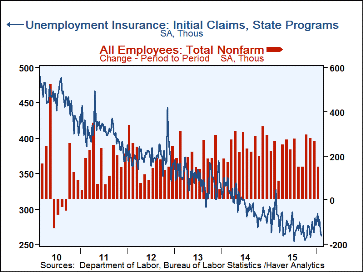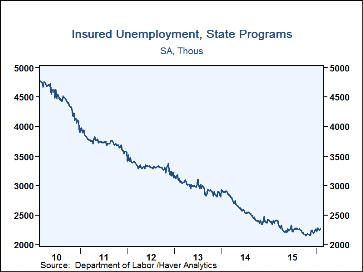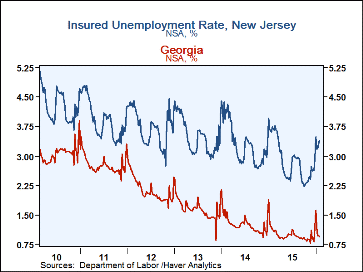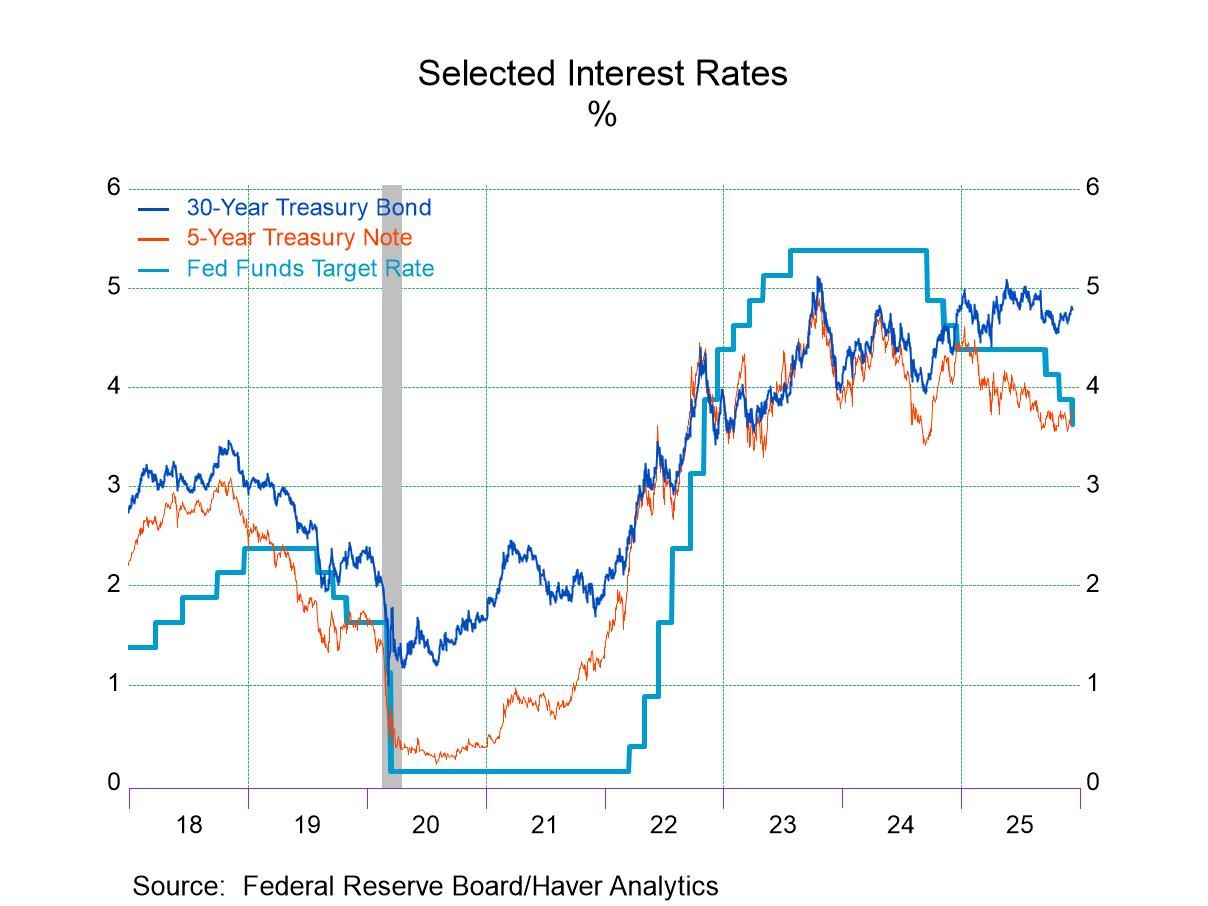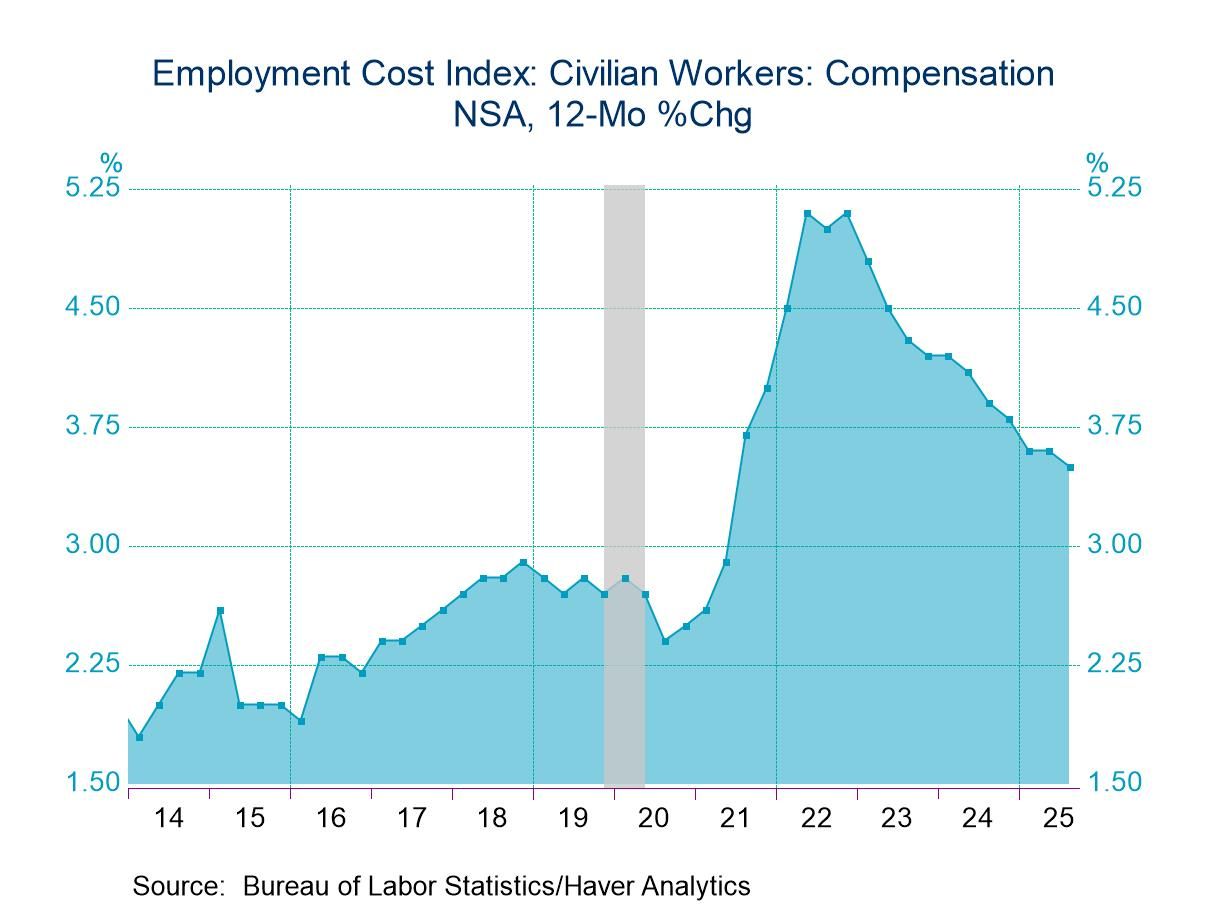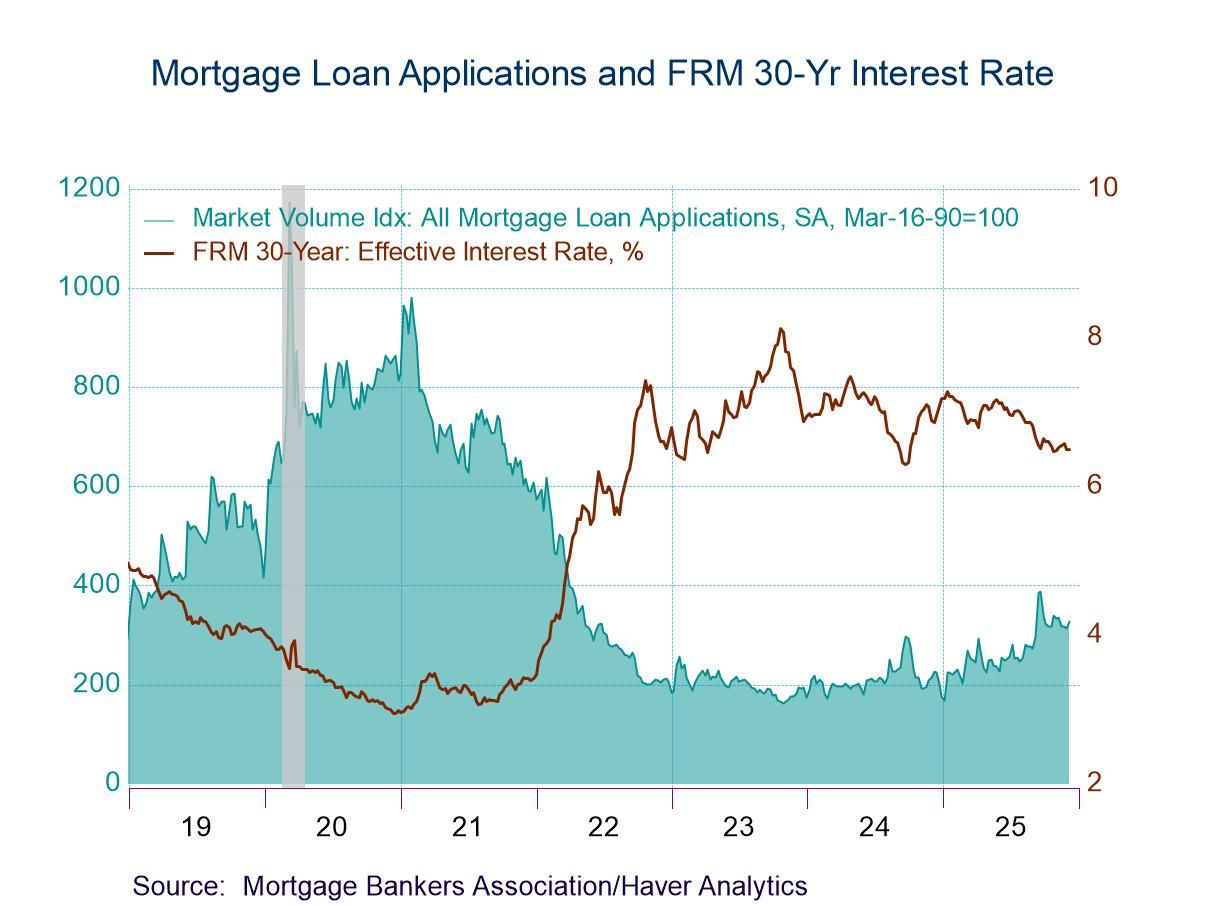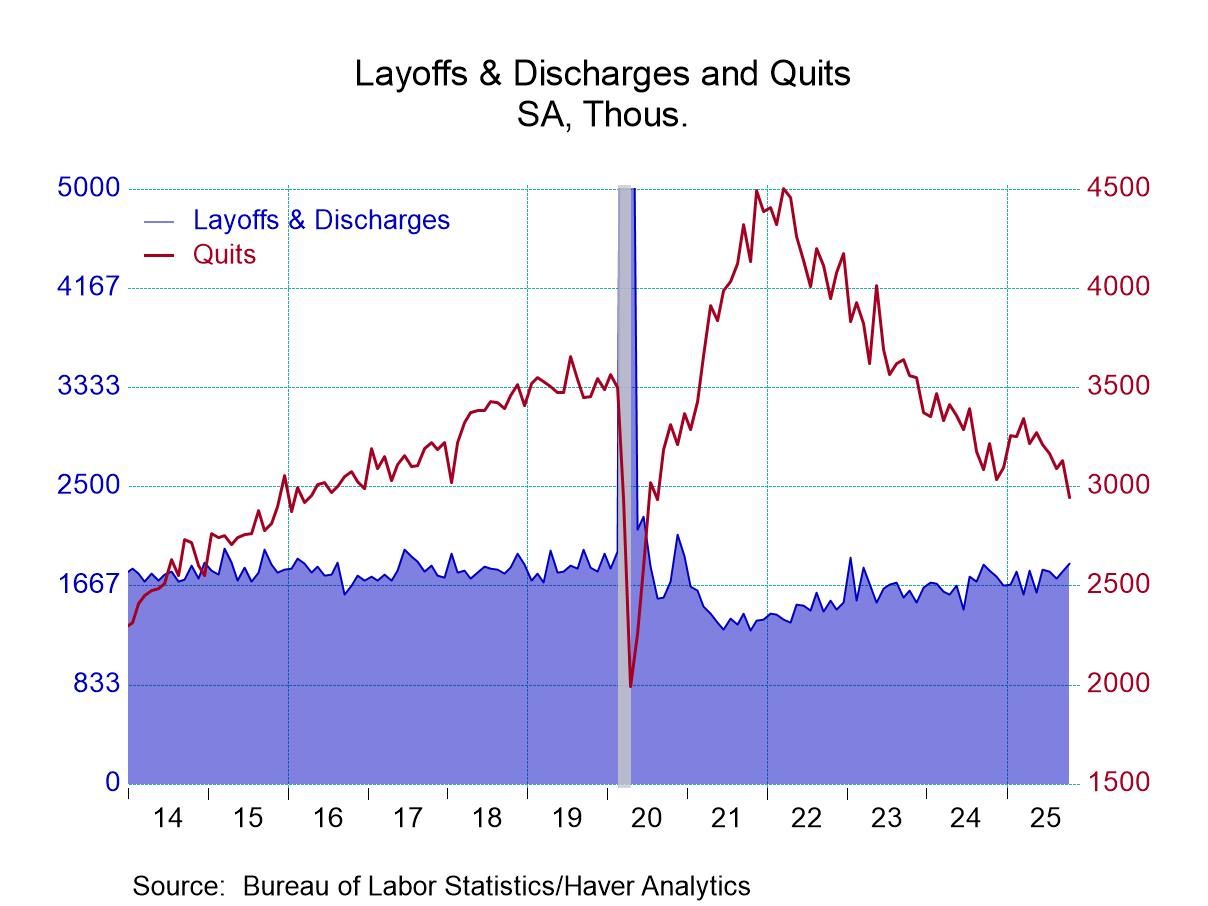 Global| Feb 18 2016
Global| Feb 18 2016U.S. Unemployment Insurance Claims Fall to Late-November Low
by:Tom Moeller
|in:Economy in Brief
Summary
Initial unemployment insurance claims declined to 262,000 during the week ended February 13 from an unrevised 269,000 in the prior week. It was lowest level of initial filings since November 21, 2015. The four-week moving average [...]
Initial unemployment insurance claims declined to 262,000 during the week ended February 13 from an unrevised 269,000 in the prior week. It was lowest level of initial filings since November 21, 2015. The four-week moving average declined to 273,250, a two month low. Consensus expectations were for 275,000 applications in the Action Economics Forecast Survey.
The latest figure covers the survey week for February nonfarm payrolls, falling 32,000 (-10.9%) from the January period. During the last ten years, there has been a 75% correlation between the level of initial claims and the m/m change in payroll employment.
In the week ending February 6, continuing claims for unemployment insurance increased to 2.273 million (-5.3% y/y) from 2.243 million. The four-week moving average eased to 2.263 million, the highest level since late-August.
The insured rate of unemployment eased to 1.7%, about where it's been since last March.
Insured rates of unemployment across states continued to vary. Near the low end of the range were Florida (0.67%), North Carolina (0.81%), Georgia (0.95%), Virginia (0.99%), Arizona (1.06%) and Tennessee (1.13%). At the high end of the scale were Massachusetts (2.80%), Illinois (2.87%), Connecticut (3.01%), Pennsylvania (3.32%), West Virginia (3.68%) and New Jersey (3.39%). The state data are not seasonally adjusted and cover the week ended January 16.
Data on weekly unemployment insurance are contained in Haver's WEEKLY database and they are summarized monthly in USECON. Data for individual states are in REGIONW. The expectations figure is from the Action Economics survey, carried in the AS1REPNA database.
The minutes to the latest FOMC meeting can be found here.
| Unemployment Insurance (000s) | 02/13/16 | 02/06/16 | 01/30/16 | Y/Y % | 2015 | 2014 | 2013 |
|---|---|---|---|---|---|---|---|
| Initial Claims | 262 | 269 | 285 | -7.1 | 277 | 307 | 342 |
| Continuing Claims | -- | 2,273 | 2,243 | -5.3 | 2,268 | 2,607 | 2,978 |
| Insured Unemployment Rate (%) | -- | 1.7 | 1.6 |
1.8 |
1.7 | 2.0 | 2.3 |
Tom Moeller
AuthorMore in Author Profile »Prior to joining Haver Analytics in 2000, Mr. Moeller worked as the Economist at Chancellor Capital Management from 1985 to 1999. There, he developed comprehensive economic forecasts and interpreted economic data for equity and fixed income portfolio managers. Also at Chancellor, Mr. Moeller worked as an equity analyst and was responsible for researching and rating companies in the economically sensitive automobile and housing industries for investment in Chancellor’s equity portfolio. Prior to joining Chancellor, Mr. Moeller was an Economist at Citibank from 1979 to 1984. He also analyzed pricing behavior in the metals industry for the Council on Wage and Price Stability in Washington, D.C. In 1999, Mr. Moeller received the award for most accurate forecast from the Forecasters' Club of New York. From 1990 to 1992 he was President of the New York Association for Business Economists. Mr. Moeller earned an M.B.A. in Finance from Fordham University, where he graduated in 1987. He holds a Bachelor of Arts in Economics from George Washington University.


